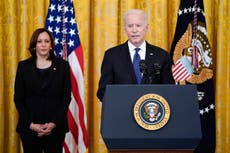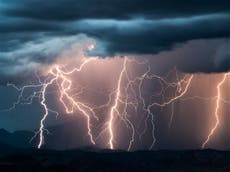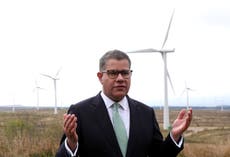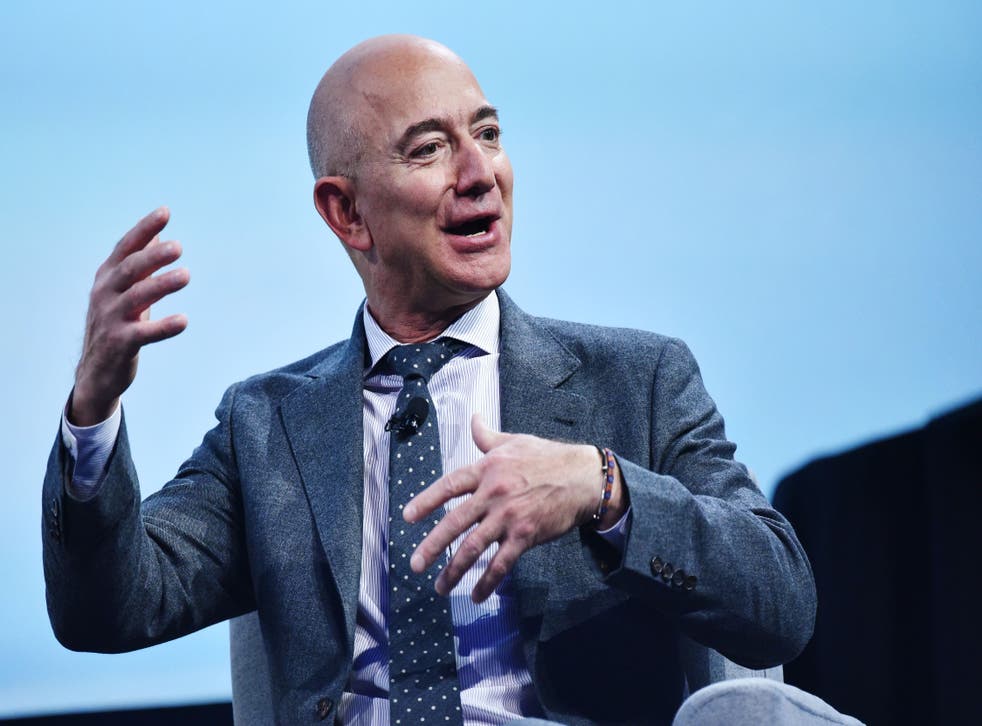CANADAOver 100 arrests so far at B.C. protests against old-growth logging: RCMP
LAKE COWICHAN, B.C. — Police say 55 people were arrested Tuesday as they enforced a British Columbia court injunction ordering the removal of blockades aimed at preventing old-growth logging on southwestern Vancouver Island.
© Provided by The Canadian Press
The RCMP say the protesters who gathered along a forest service road west of Lake Cowichan were given a chance to leave or face arrest, and nine of those taken into custody had been arrested in previous days.
The Mounties say more than 100 people have been arrested since enforcement of the court injunction began last week to allow workers with the Teal-Jones Group to resume logging in that area and in the Fairy Creek watershed to the south, near Port Renfrew.
Sgt. Chris Manseau says police enforcement was initially planned for just one location Tuesday at a camp near Port Renfrew, but some officers were redeployed as protesters gathered along the McClure forest service road.
He says in a statement that arrests were expected to continue there Wednesday.
Activists say very little of the best old-growth forest remains in B.C. and Fairy Creek is the last unprotected, intact old-growth valley on southern Vancouver Island.
Teal-Jones has said it plans to harvest about 20 hectares at the north ridge of the 1,200-hectare watershed out of 200 available for harvest.
This report by The Canadian Press was first published May 26, 2021.
Ongoing arrests of old growth defenders ignite questions about injunctions
Fourteen people were arrested on Saturday at Caycuse Camp, police say, in one of eight blockades in Pacheedaht and Ditidaht territories. Those present say the day’s arrests amplified concern about the legality of methods used by RCMP officers who are enforcing a court-ordered injunction meant to restrict opposition to logging.
While people have been protesting logging of old growth in what has become widely known as the “Fairy Creek Blockades” since last summer, events escalated after police started enforcing the injunction won by Surrey-based logging company Teal-Jones.
“There were families, Elders, youth, and everyone in between there,” reports xʷ is xʷ čaa, also known as Katie George-Jim, in an Instagram Live video she posted on her account the day following the arrests.
George-Jim was aggressively arrested on Thursday, May 20 and charged with assaulting a police officer and obstructing justice.
She has been vocal about her inherent rights and responsibilities to protect her ancestral lands, while amplifying her uncle Bill Jones’ claims about false authority in who’s green-lighting logging agreements with the Pacheedaht Nation.
While Frank Queesto Jones and Chief Councillor Jeff Jones have been documented for speaking out against the logging protests, Bill Jones has publicly criticized their authority to speak on behalf of his community, calling a public letter released by the men intentionally “contradictory and confusing,” according to a media release statement.
More than 100 people had gathered outside the Caycuse Camp Saturday morning, where police had drawn a line using yellow tape, and parked their vehicles, blocking access to the main site where at least one “tree-sitter” remains installed in an old growth tree, according to sources.
Defenders walked past the line and gathered around the RCMP vehicles, George-Jim says.
“People sat around the RCMP vehicles, sharing love, talking about why we’re all there,” she says. “We were able to start a fire for fish and other traditional foods. There was another fire under the road for the youth and children, set up by an auntie.”
Teal-Jones is the owner of a forest tenure granted by the province of B.C. called Tree Farm Licence 46 (TFL 46), located on Vancouver Island, north of Port Renfrew, north of the San Juan River, southwest of Cowichan Lake.
It is bounded on the south-west in part by Carmanah Walbran Provincial Park and Pacific Rim National Park Reserve and is 59,432 hectares in size.
On April 1, B.C. Supreme Court Justice Frits Verhoeven granted Teal-Jones an injunction banning roadblocks “and other conduct intended to obstruct Teal’s logging activities and the related activities of its contractors.”
“The protesters have serious and passionate concerns about the environment. There is no doubt that climate change is real, and poses a grave threat to humanity’s future … But as I have said, the effect of old growth forest logging on climate change and biodiversity is not before me, and is not for me to say,” Verhoeven stated.
After supporters crossed the temporary exclusion zone line on Saturday around noon, they sat around the RCMP vehicles that were parked, cooking fish and wild meats, says George-Jim. Several hours later, the group got word that more RCMP vehicles were on the way to the site.
IndigiNews spoke with three people who were also present at the event: Elder Rose Henry (who was taken from her Tla’amin Nation community during the Sixties Scoop and has been standing with Indigenous sovereignty movements for years), Ojisto Henhawke from the Mohawk Nation, and Asiyah Robinson.
When the group got word several hours later that more police were on the way, kids were escorted to cars for safety, Henhawke says.
According to multiple witnesses, police showed up, parked their vehicles, formed a line, and started marching towards the group, ushering people back behind the exclusion zone, while also threatening to make — and actually making — arrests.
Witnesses shared concerns about the RCMP officers’ conduct — alleging that they moved the temporary exclusion zone parameters after establishing them, and targeted Indigenous and racialized people, taking them into custody first and letting them out last.
“The rule was that you wouldn’t be arrested if you were external to the exclusion zone,” Robinson tells IndigiNews at the Fairy Creek headquarters the day after the May 22 arrests. “We realized that they had moved this arbitrary line, because they were threatening everybody with arrest.”
One of the first people to get arrested was an Indigenous youth, Robinson says, adding that he was standing next to her when he was grabbed by his arms and legs and carried into a police vehicle.
“I got so frustrated, I got so angry, because there was absolutely no reason,” Robinson says. “We were walking, we were following, we weren’t harassing anyone, and they put their hands on me.”
Officers ushered Robinson back with others, asking about her well-being, while also putting her in an uncomfortable position, she says.
As Robinson and others were pushed back by police and separated from the others, she says officers physically put their hands on her shoulders to usher her back, and asked her “Are you okay little one?” and told her to “Watch out for your friends’ toes.”
But it didn’t come across as genuine concern to her, she says, as what police were saying and doing didn’t align.
“Do not be the reason that I do not have space, that I have high anxiety, and then ask me if I’m okay,” Robinson says. “The road was clear at that point. It was a power move. It had to do with control and abuse of power.”
Robinson says she’d never been approached by so many police and it brought up a lot of feelings around “military police powers who abuse power.”
“It circles back to land. Everything is about the land and all of us are fighting for that, and they understand that and that’s why they’re trying to take it,” she says. “They understand it’s our connection, they understand it’s how we relate to each other, that it’s our family and our food source.”
Robinson says that night, feeling frustrated and terrified, she gathered with a group of supporters outside the Lake Cowichan police detachment to wait for the arrestees to be released.
Aya Clappis, a Nuu-chah-nulth and Somali land defender, posted a live update on Instagram which shows people greeting and embracing people as they’re released from custody.
“Where are the Indigenous youth?” George-Jim can be heard calling out in the video.
“Why were the Indigenous people separated from the white people?”
As documented in the Instagram live video, Indigenous and racialized youth were some of the last to be released.
Claims about the shifting exclusion zone, the targeted arrests and the intimidation tactics used by police were all put to Sgt. Chris Manseau, a spokesperson for the B.C. RCMP.
“I have been told that all 14 that were arrested were inside the temporary access control area, contrary to the court-ordered injunction. I do not believe that any were outside of it,” writes Manseau in an email to IndigiNews on May 25.
“As for the timing of the arrests and releases, those are based purely on circumstances at the time (location, behaviour, etc.),” he says. “I hope that by being open with the media, and inviting them daily to observe the enforcement, they can show what is truly occurring to the public.”
The RCMP’s openness with the media was called into question last week by the Canadian Association of Journalists (CAJ).
In a statement, the CAJ calls out the RCMP for continuing “to block, detain and harass journalists as they try to cover the enforcement of injunctions,” and “respectfully calling on courts to limit the powers of the RCMP, and other police agencies, when issuing injunctions.”
All 14 people arrested at the Caycuse site were released without charge, police say.
According to a CBC report, six people were also arrested on May 22 at another blockade called “Waterfall Camp” and two people known as “tree sitters” were taken down by police, according to Manseau.
On May 24, the B.C. RCMP reported that since they began enforcing the injunction, officers have arrested 53 individuals — 46 for breaching the injunction (civil contempt of court) and 7 for obstruction.
Yesterday, police continued to enforce the injunction and attempt to dismantle the blockades, according to independent photographer Mike Graeme, who has been reporting on the ground for weeks.
IndigiNews will be on the ground following the story as it unfolds.
Emilee Gilpin, Local Journalism Initiative Reporter, The Discourse


 © Getty Images
© Getty Images







